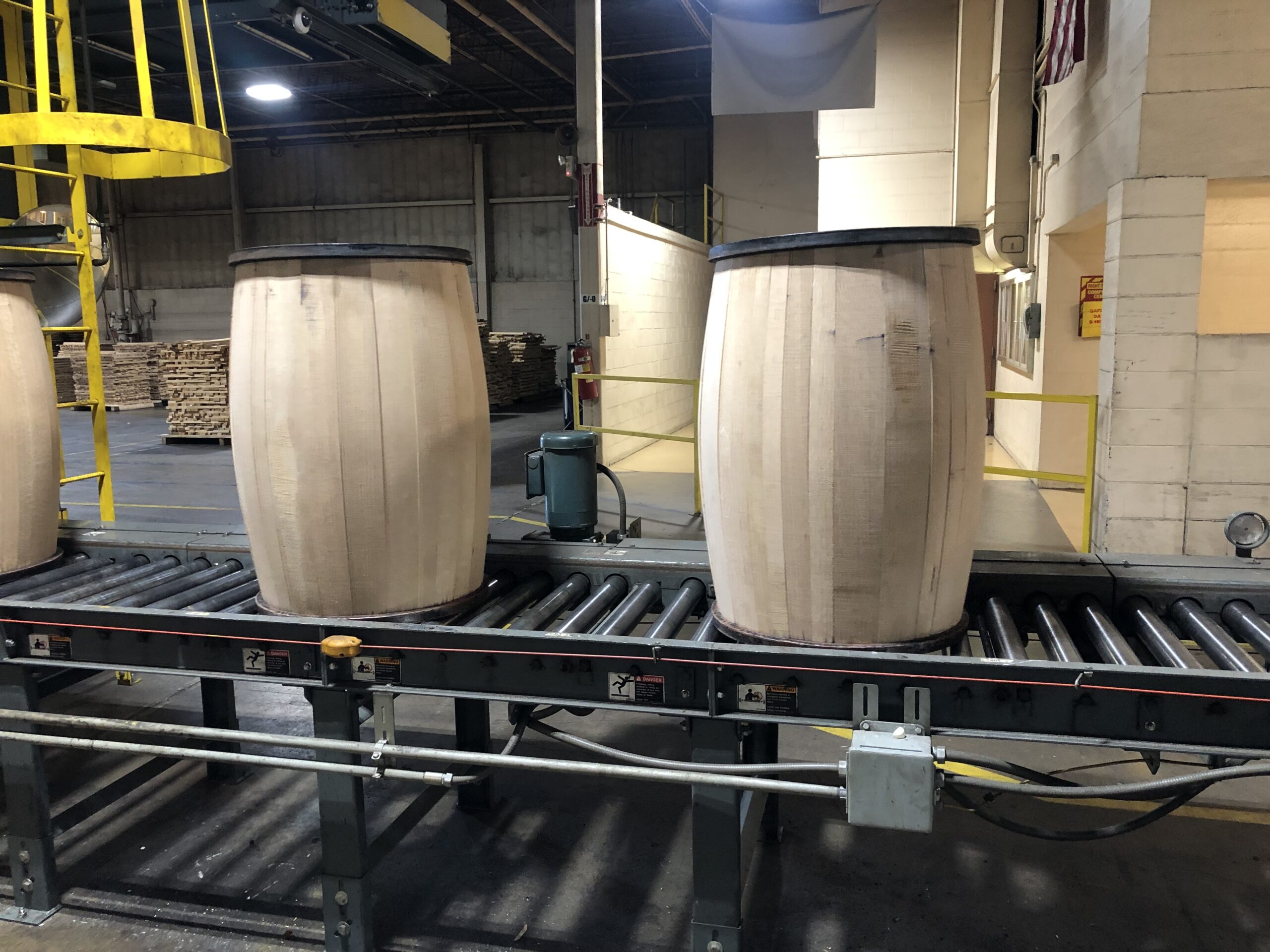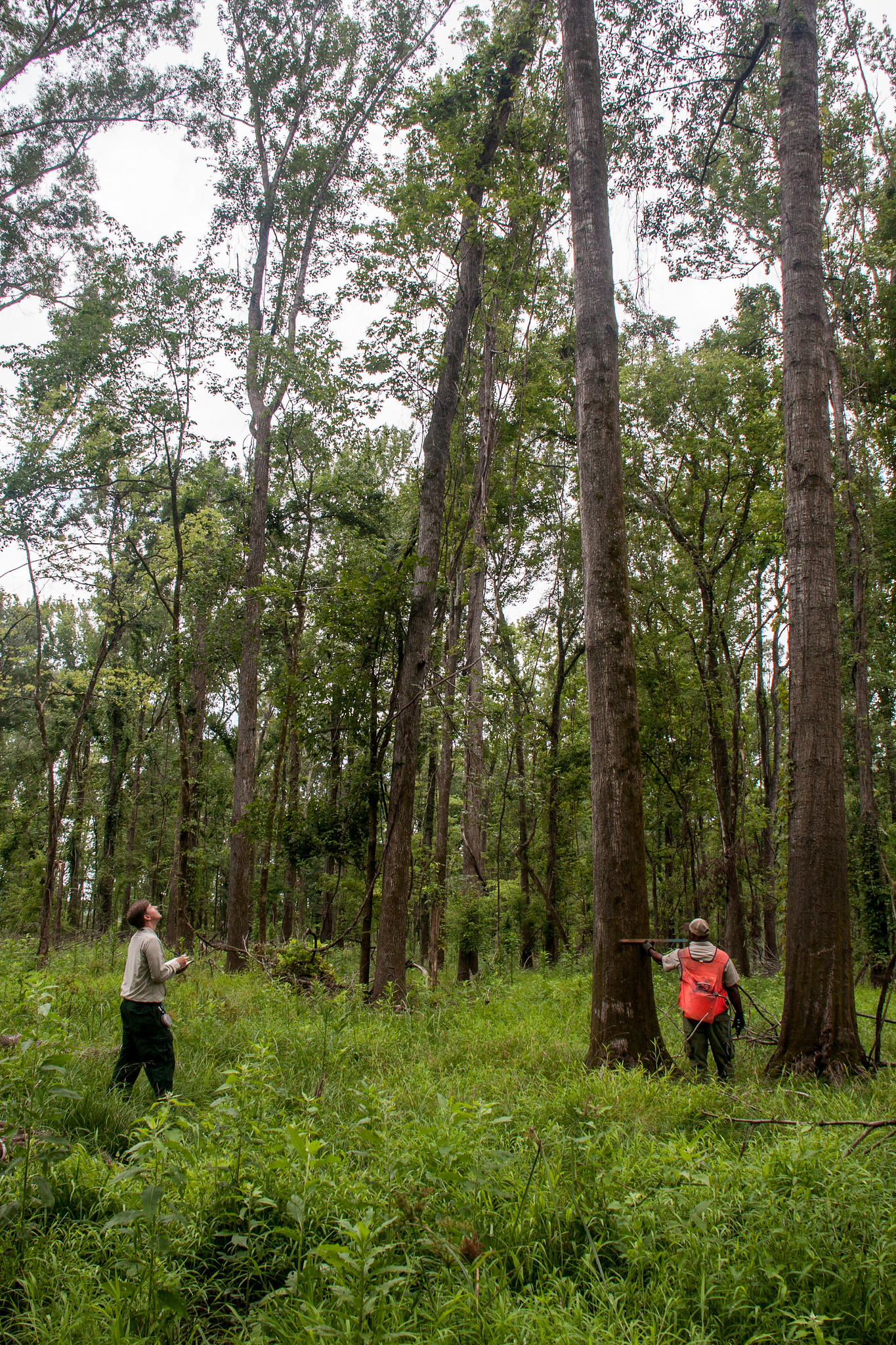By Russell Bozeman, Mississippi state forester and NASF Forest Markets Committee chair
In honor of National Forest Products Week, we’ve been celebrating the value of forest products and their contributions to society. Since 1960, the week-long celebration (beginning on the third Sunday of October) has been observed across our nation. President Dwight Eisenhower was the first U.S. president to recognize this week and every president since (including President Joe Biden) has followed suit.
Why use forest products?
 From the cardboard boxes used to ship online orders across the world, to the cellulose found in smartphones and toothpaste, forest products are used every day by everyone. What’s more, forest-derived goods are an environmentally friendly choice. They are less carbon-intensive to produce than other materials like concrete, plastic, and steel, and all of the carbon stored in wood products (like paper, pallets, and lumber used in building construction) remains sequestered throughout the product’s lifetime.
From the cardboard boxes used to ship online orders across the world, to the cellulose found in smartphones and toothpaste, forest products are used every day by everyone. What’s more, forest-derived goods are an environmentally friendly choice. They are less carbon-intensive to produce than other materials like concrete, plastic, and steel, and all of the carbon stored in wood products (like paper, pallets, and lumber used in building construction) remains sequestered throughout the product’s lifetime.

In the U.S. South, we are proud to have 245 million acres of forestland across our thirteen southern states. These forests are central to the environmental integrity of our region, providing us with clean air, ample drinking water, and diverse wildlife habitat. They also power our economy and provide for our way of life.
How do forest products benefit consumers?
The forest products industry contributes billions of dollars to the U.S. economy annually and makes up 4% of the U.S. manufacturing GDP. According to the American Forest and Paper Association, the forestry and forest products industries in the U.S. directly employ upwards of 950,000 people, making this sector among the top 10 manufacturing employers in 45 states. More than 75% of all U.S. pulp and paper mills are in counties that are more than 80% rural.
In my home state of Mississippi, forestlands represent over 62% of the total land base totaling 19.1 million acres and 89% of these forestlands are privately owned. Timber is in the state’s third most valuable agricultural crop, contributing $13 billion to the state’s economy and directly employing over 61,000 people with an annual payroll of $1.1 billion. In addition to benefiting the state’s economy, forests and trees provide human health benefits, carbon sequestration, ecosystem services, and recreational opportunities. Healthy forests truly make for healthy lives.
What happens if we lose forestland?
Urbanization and land use change could have a drastic impact on privately owned forests. According to the Southern Forest Futures Report published by the USDA Forest Service, the U.S. South is expected to lose between 11 and 23 million acres of forestland by the year 2060, primarily because of increased population and urbanization. That’s equivalent to a land mass the size of South Carolina.
Without these forests, we lose a huge economic driver, leading to loss of jobs, as well as crucial habitat for wildlife. Keeping Forests is one organization in the region that was created to bring public and private partners together to slow this forestland loss. United together, we aim to catalyze market-based solutions that help landowners keep their land in forests.
Who is leading the way?
Since its start in 1920, the National Association of State Foresters (NASF) has served as a leading authority on forest management in the United States. NASF’s membership is composed of the directors of forestry agencies in the 50 states, five U.S. territories, three nations in compacts of free association with the U.S., and the District of Columbia. Through its members, referred to as “state foresters,” the association advocates for federal legislation and national policies that promote the health, resilience, and productivity of both rural and urban forests. Learn more about NASF’s policies.
State forestry agencies are the primary delivery system for forest management activities nationwide. They conserve, enhance, and protect state and private forests, which encompass nearly two-thirds of the nation’s forests, and are responsible for wildfire protection on more than 1.5 billion acres. Learn more about NASF’s membership in the latest state forestry agency statistics survey.
 In the southern states, Keeping Forests is taking a radically different approach to forest conservation. Rather than buying individual properties or conserving forests one acre at a time, they believe that the best chance to sustain southern forests at-scale is to create the conditions for our current land stewards to keep forests as forests. The strategy focuses on promoting traditional forest markets, creating emerging markets, and cultivating forest champions and leaders. Access to markets is necessary for many landowners to continue to keep their forests managed and healthy. Healthy markets create healthy forests, and healthy forests create healthy lives
In the southern states, Keeping Forests is taking a radically different approach to forest conservation. Rather than buying individual properties or conserving forests one acre at a time, they believe that the best chance to sustain southern forests at-scale is to create the conditions for our current land stewards to keep forests as forests. The strategy focuses on promoting traditional forest markets, creating emerging markets, and cultivating forest champions and leaders. Access to markets is necessary for many landowners to continue to keep their forests managed and healthy. Healthy markets create healthy forests, and healthy forests create healthy lives
You can celebrate National Forest Products Week by learning more about the climate benefits of wood products and active forest management, getting to know just how many products you use that come from our forests, or by visiting a local, state, or national forest.
To learn more about what your state is doing to actively manage healthy forests near you, contact your state forestry agency.

